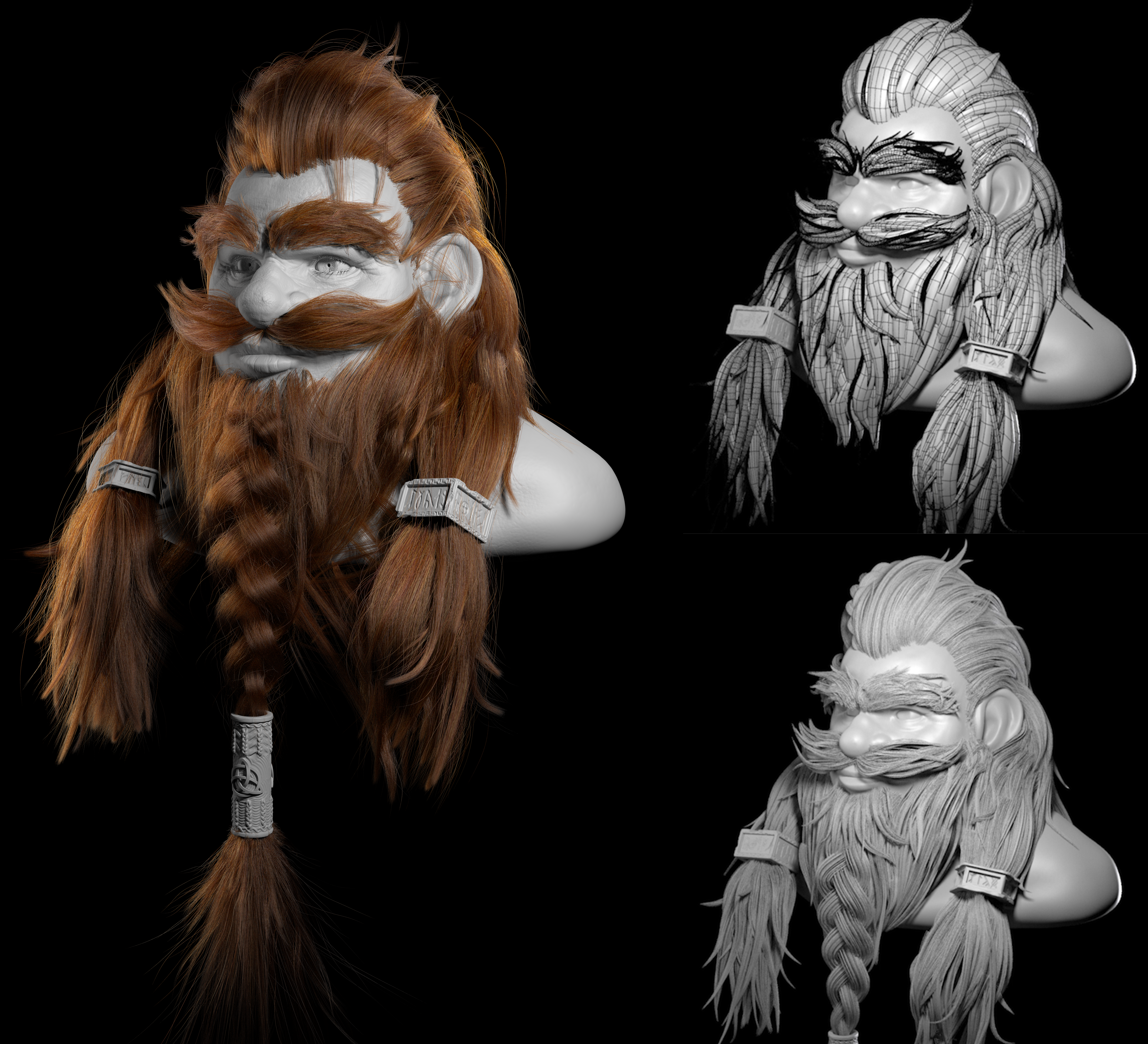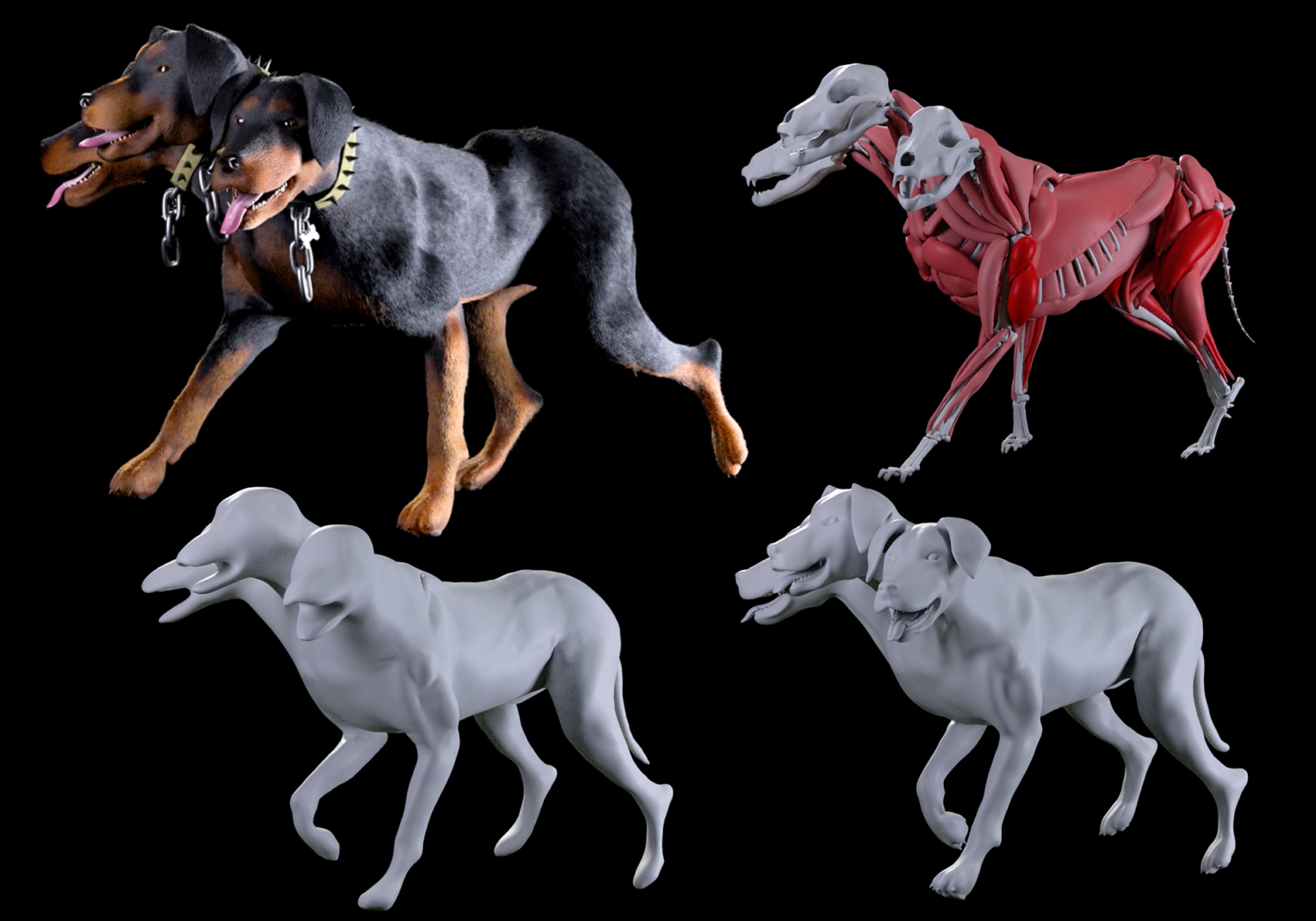
Knit Sweater
This was created largely to demonstrate the capabilities of the Tubes to Curves HDA that I created. The simulation was done with Vellum, and was designed to have the same weight and feel as a thick, knitted sweater. I also developed a helpful tool that automatically finds the correct stitching loops for the Vellum Drape toolset. The fabric is simulated as cloth, which is passed through a system that copies knit loops across the surface based on the UVs of the fabric. These loops are passed through the Tubes to Curves HDA that I created and some frizz and flyaways are added to get the final look. The final render is 100% curves, with only basic point color noise modifying the material.




